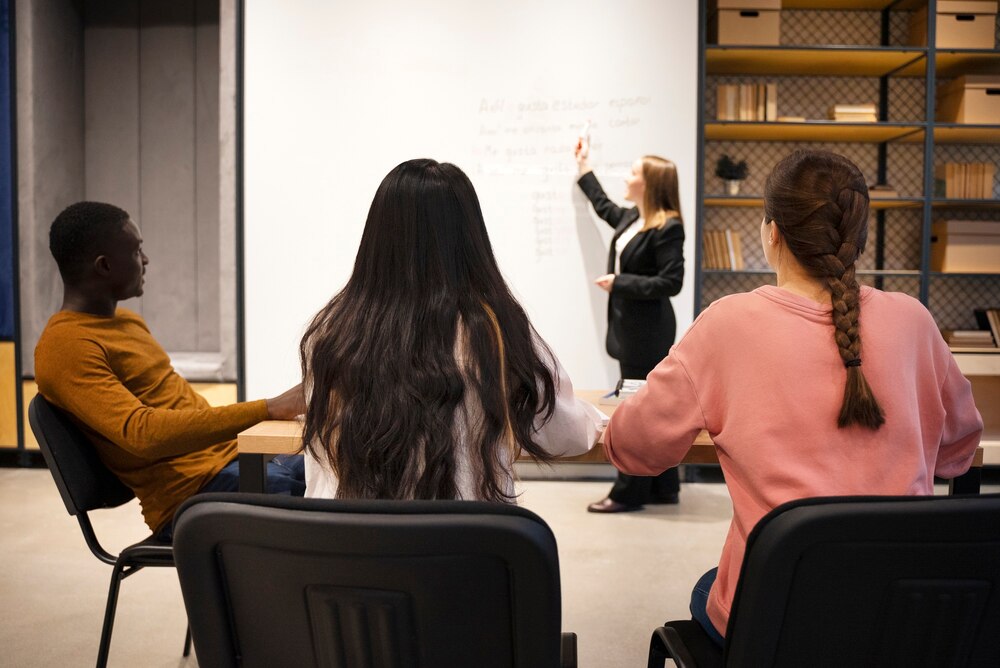Transformational leadership in education is a powerful force for driving change and fostering communal harmony. Read More
Innovative Approaches to Community Engagement
Transformational leaders often seek to bridge gaps within their communities by fostering inclusive and collaborative environments. One notable example is the “Community Schools” initiative in the United States. This approach involves transforming traditional schools into community hubs where educational institutions partner with local organizations to provide a range of services, from health care to after-school programs. Leaders in this initiative work to integrate educational support with community resources, thereby creating a supportive environment that addresses students’ diverse needs and strengthens communal bonds.
Empowering Students through Participatory Leadership
In educational settings, transformational leaders who embrace participatory leadership often see remarkable improvements in student engagement and community involvement. For instance, the “Student Voice” project in various schools globally encourages students to take an active role in shaping their educational experience. By involving students in decision-making processes and empowering them to lead initiatives, these leaders foster a sense of ownership and commitment among students. This participatory approach not only enhances educational outcomes but also promotes a sense of communal harmony and shared purpose.
Promoting Equity through Inclusive Education Models
Transformational leaders who focus on equity often drive significant changes in educational systems. The “Universal Design for Learning (UDL)” framework, adopted by schools around the world, is a prime example. UDL promotes inclusive education by offering multiple means of representation, expression, and engagement to meet the diverse needs of all students. Leaders who champion UDL work to create educational environments where every student has the opportunity to succeed, regardless of their background or abilities. This commitment to inclusivity fosters a more harmonious and equitable community.
Leveraging Technology for Collaborative Learning
The integration of technology into education has been a game-changer for many communities. “EdTech hubs” and “Digital Learning Commons” are examples of how transformational leaders use technology to foster collaboration and innovation. These initiatives provide students and educators with access to cutting-edge tools and resources that enhance learning experiences. Leaders in these initiatives often emphasize collaborative projects, online learning platforms, and digital literacy programs, which not only improve educational outcomes but also build a connected and engaged community.
Revitalizing Schools through Community Partnerships
Transformational leaders often forge strong partnerships with local businesses, organizations, and governments to revitalize schools and enhance educational opportunities. The “Adopt-a-School” program in various cities exemplifies this approach. In these programs, local businesses and community organizations adopt schools to provide financial support, mentorship, and resources. Leaders who facilitate these partnerships create a network of support that benefits both students and the broader community, fostering a sense of shared responsibility and communal harmony.
Integrating Arts and Culture Into Education
Incorporating arts and culture into the curriculum can have a profound impact on community cohesion. The “Arts Integration” programs implemented in schools around the world demonstrate how transformational leaders use the arts to enhance learning and foster cultural appreciation. These programs integrate artistic activities into various subjects, promoting creativity and cultural understanding. By celebrating diverse artistic expressions and cultural traditions, leaders help build a more inclusive and harmonious community.
Fostering Social-Emotional Learning (SEL)
Transformational leaders who prioritize social-emotional learning (SEL) contribute significantly to building communal harmony. SEL programs, such as those implemented in the “SEL for All” initiative, focus on developing students’ emotional intelligence, empathy, and interpersonal skills. Leaders who support SEL create environments where students learn to understand and manage their emotions, build positive relationships, and make responsible decisions. This holistic approach to education enhances students’ well-being and fosters a supportive and harmonious community.
Transforming Learning Spaces for Greater Inclusivity
The design and use of learning spaces play a crucial role in fostering community and collaboration. “Flexible Learning Environments” that incorporate adaptable furniture, collaborative work areas, and outdoor classrooms are examples of how transformational leaders innovate to create inclusive and engaging spaces. By redesigning learning environments to support various teaching and learning styles, leaders promote a more inclusive and harmonious educational experience.
Encouraging Global Citizenship through International Programs
Transformational leaders often emphasize global citizenship and intercultural understanding as key components of education. Programs such as “International Baccalaureate (IB)” and “Global Schools Alliance” provide students with opportunities to engage with different cultures, languages, and global issues. Leaders who champion these programs foster a sense of global interconnectedness and communal harmony, preparing students to navigate and contribute to an increasingly diverse world.
Addressing Environmental Sustainability in Education
Environmental sustainability is another area where transformational leadership can drive communal change. “Green Schools” initiatives, which focus on integrating sustainability practices into school operations and curricula, exemplify this approach. Leaders who advocate for green schools promote environmental stewardship and raise awareness about sustainability issues. By fostering a culture of environmental responsibility, these leaders contribute to a more harmonious and sustainable community.
Conclusion: Inspiring Change Through Innovation
Transformational leadership in education plays a crucial role in inspiring change and fostering communal harmony. Through innovative approaches to community engagement, participatory leadership, equity, technology, arts integration, SEL, learning space design, global citizenship, and environmental sustainability, leaders can drive meaningful improvements in educational environments and strengthen community bonds. By embracing these strategies, educational leaders not only enhance learning outcomes but also contribute to a more inclusive, supportive, and harmonious community.





